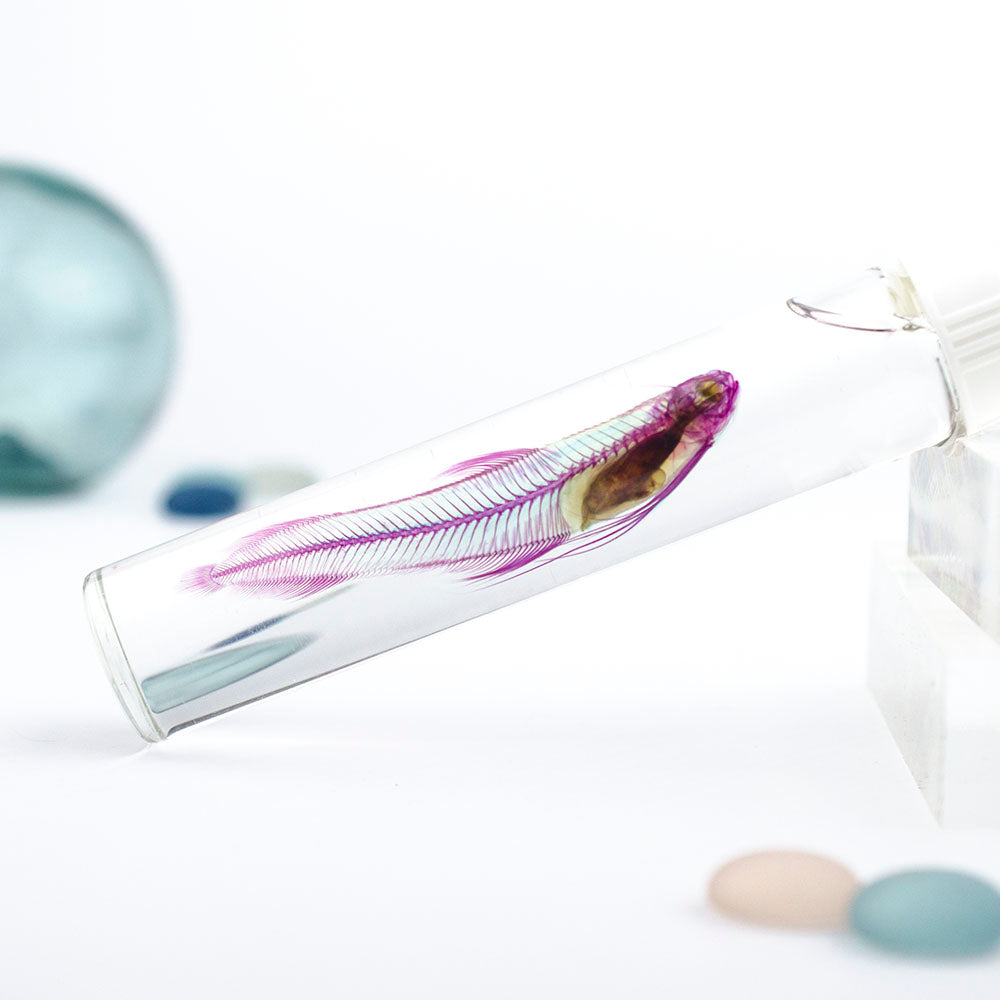KAIRU ECO-ART STUDIO
Transparent specimen sea loach fish specimen Taiwan marine life
Transparent specimen sea loach fish specimen Taiwan marine life
Couldn't load pickup availability
Share
//Product Features//
See With Us, Sea With Us
With the mini museum series on your desk, let’s make the ocean no longer a stranger!
KAIRU Studio hand-made transparent specimens, a series of mini museums on the table. The transparent specimens in each glass bottle are your unique collections. The preservation solution is safe and non-toxic and the specimens can be stored permanently. Let’s collect your own biological illustrations together. Bar!
How did KAIRU turn the fish transparent?
Transparent biological specimens are a method of making biological specimens. They were originally used for scientific research. The specimens used by KAIRU come from abandoned fisheries, exotic species or dead organisms in farms. The integrity of the organisms is not destroyed during production. Next, after multiple treatments with chemicals and dyes, the remains of the dying creatures are reborn into beautiful and unique transparent specimens.
DIY handmade Kairu's Marine Lab series transparent specimen making set
//Product specifications//
//Contents//
Transparent biological specimens
HD glass bottle
glycerin
Display carton
Classic Creature Introduction Card
Product warranty card
//Container size//
15 ml screw-top glass bottle, height 7 cm, diameter 2.1 cm
60 ml screw-top glass bottle, height 14 cm, diameter 2.7cm
Designed by KAIRU Studio/Made in Taiwan
//Biology classroom//
Bregmaceros spp.
Characteristics of the family: The body is long and flat on both sides, the head is short, the front end of the mouth is in the middle, the upper and lower jaws and hoe bones have many small movable teeth, and the palatine bones on both sides of the hoe bones have no teeth. Gill slits wide, without mental barbels. Has round scales and no lateral lines. The first dorsal fin is as slender as a silk and is located on the head. The base of the second dorsal fin is longer, with the front and rear segments being higher and the middle lower. The anal fin and the second dorsal fin have similar origins and similar ranges. The caudal fin may be pointed, rounded or concave.
Interspecific identification characteristics: In fresh specimens, the distribution range of spots on the body, pectoral fins, dorsal fins or underside of the pectoral fins can be used to identify, as well as the number of longitudinal and transverse scales. After making a transparent specimen, you can observe the number of dorsal fin rays, the difference between the starting points of the second dorsal fin and anal fin, or the number of vertebrae.
Habitat environment: It inhabits the bottom waters of the continental shelf. The general habitat depth is within 20-300 meters. It likes to migrate in groups. Feeds on plankton.
Fishery purposes: Due to its small size and being caught by bottom trawl nets, it has no economic or edible value and can be used for academic research. It is mostly used as trash fish or broken into fishmeal feed.
>The products are biological specimens made from post-processed dead organisms, mostly from discarded fisheries or naturally dead organisms.
>For appreciation or teaching purposes only, please do not eat and it is not recommended to play with.
>Real biological specimens, photos are for reference only. If the individual is slightly damaged (such as incomplete fins, etc.), this is normal.
>It is recommended to store in a cool place away from direct sunlight.
>Storage solution: Glycerin is a non-toxic liquid. If it comes into contact accidentally, please rinse with water.
>The specimen is preserved in glycerol, and the remaining air bubbles can be used to adjust the posture of the specimen.
>Hand-made specimens will have color differences. Photos are for reference only. Friends who have color requirements are welcome to contact us before placing an order.
//About KAIRU//
The members of KAIRU Ecological Art Studio all have backgrounds related to marine life and experience in museums. They hope to use transparent biological specimens as a starting point and other cultural and creative products related to marine life to let more friends know these living creatures through KAIRU Studio. The good friends of the ocean in the waters around Taiwan make the ocean no longer a stranger








